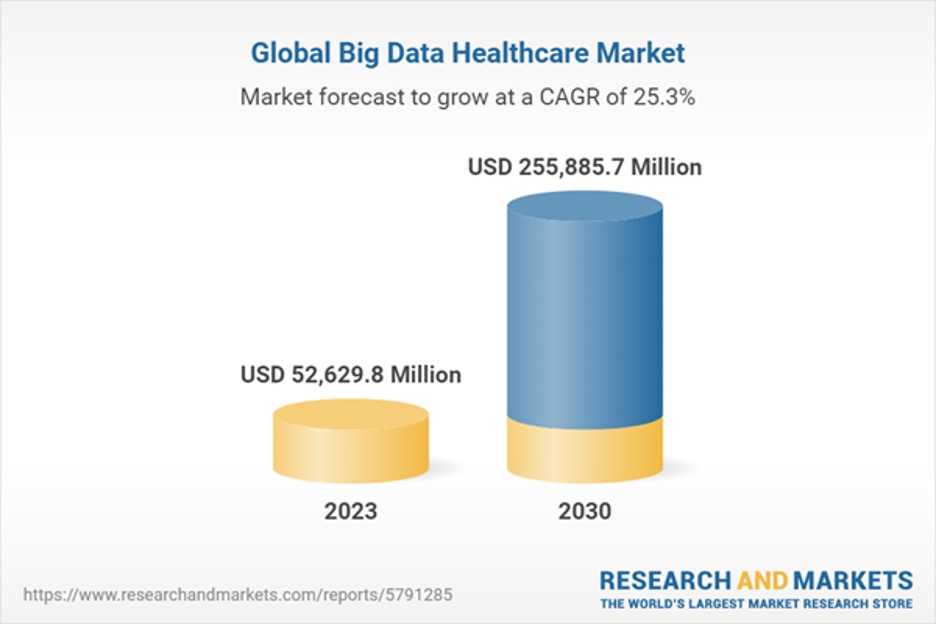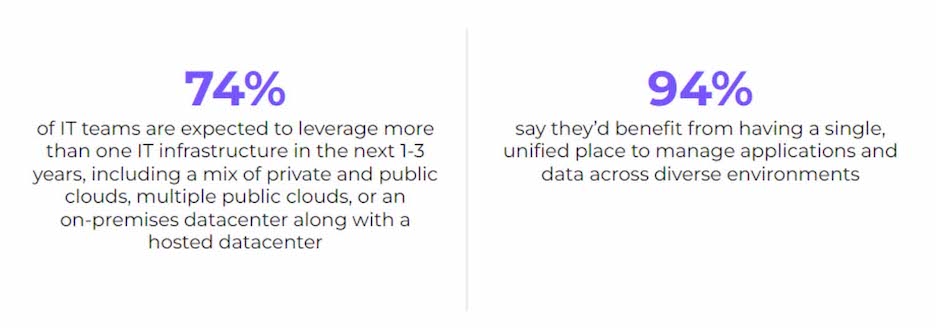The healthcare industry is at the forefront of a data revolution. Generating nearly a third of all the world’s data and experiencing rapid digital transformation at the same time, the industry has been faced with pressing challenges in recent years around healthcare data storage.
More specifically, healthcare organizations now have to balance the data deluge with the need to keep it secure, specificly focusing on Protected Personal Health Information (PHI), HIPAA standards.
Traditional on-premises solutions are no longer an option in a world where things like remote work, telehealth visits, and IoT wearables are becoming the norm. On the flip side, disparate cloud environments can lead to data siloes or inconsistencies and security vulnerabilities.
The need for unified, globally distributed healthcare data service strategies is imperative. In this article, explore the drivers, challenges, trends and strategies around unified data storage for the heathcare industry.
The Growing Complexity of Healthcare Data
The healthcare data landscape is becoming increasingly complex, marked by a significant rise in the volume and diversity of data being generated and managed.
Today, the healthcare sector generates nearly an entire third (30%) of the world’s data, and this percentage is projected to grow. Between 2023 and 2030, the global big data healthcare market will multiply by nearly 5X to reach more than $255M.

This staggering growth is the result of a number of digital transformation drivers in healthcare over the past several years, including:
Electronic Health Records – The digitization of patient records has led to a substantial increase in the volume of data healthcare providers handle. Electronic health records (EHRs) encompass a comprehensive range of patient information, from medical histories to ongoing treatment details. While they improve accessibility and can enhance patient care, EHRs also present significant challenges in terms securing of patient health information, and of data storage and management, particularly in maintaining data accuracy and integrity
Advancements in Medical Imaging – Medical imaging technologies, such as MRIs, ultrasounds and CT scans, produce high-resolution images that contribute to large datasets. The storage and management of these images are challenging due to their size and the need for high-speed access and analysis. Efficiently storing and retrieving these diagnostic-quality images quickly for care purposes is often crucial but requires sophisticated healthcare data storage systems.
Patient-Generated Data –The explosion of wearable technology and health apps have generated unprecedented amounts of patient-generated health data. This data type offers valuable insights into patient adherence and health outside clinical settings, but it also adds to data management complexity. Integrating this unstructured data with structured clinical data to form a holistic view of patient health is a challenge that healthcare providers increasingly face.
Length of Storage Requirements – Deciding how long to store old data is a decision every enterprise has to make as part of their data storage strategy. For healthcare organizations, however, this decision is defined by legal and regulatory requirements.
Government regulations mandate holding onto records and images from radiology studies for 7-10 years, depending on state or geographic location, accordinig to Leah Gabbert, Global Industry Solutions Marketing Director at Nutanix.
“And, perhaps even longer if that patient is a minor, depending on various governmental and compliance requirements,” Gabbert explained. “These studies create diagnostic-quality images that radiologists can access and read from anywhere, but these are enormous files that need to be stored and secured.”
Further, the nature of interoperability and record-sharing between providers requires easy retrieval of these images to be digitally shared.
In these and similar scenarios, high capacity and accessibility are both essential but difficult to achieve with traditional, siloed and on-premise solutions. Unified and cloud-based alternatives are needed to meet modern demands for length of storage and accessibility over that period.
Managing the Sprawl – Healthcare is no exception to the massive IT infrastructure sprawl that’s happening in every industry and sector. By 2026, a staggering 750M new applications will enter the market, and 50% of data will be generated at the edge. By 2027, 85% of workload placements will no longer be optimal. Already today, a massive 181 zettabytes of data are created and consumed daily. At this scale, effective data storage is simply not possible without a defined strategy and the right tools in place to streamline and centralize this continued and accelerating sprawl.

Compliance with Healthcare Regulations – Data storage in healthcare is highly regulated to ensure patient privacy and security. Compliance with regulations like HIPAA in the U.S. is non-negotiable but adds layers of complexity for data storage systems. These regulations dictate how healthcare data is stored, accessed, and shared, which requires robust systems and protocols.
Integrating Diverse Data Types –Perhaps the most significant challenge in healthcare data management is integrating diverse data types from EHRs, medical imaging, patient-generated data, and even operational data (such as physical surveillance or asset tracking) into one cohesive system. This integration is critical for comprehensive patient care but demands advanced technology solutions and effective data governance strategies.
Telehealth Delivery – The rapid adoption of telehealth during and after the pandemic has introduced a new dimension to healthcare data management. Virtual visit and health monitoring data records are now being maintained at unprecedented levels. As a result, challenges are emerging around the secure transmission and efficient storage of these data types, as well as their integration with existing health records. Telehealth's rise has necessitated data storage solutions that not only can manage the vast amounts of data generated by this delivery mode, but can ensure data is both securely stored and readily accessible for providers and patients who need it in real-time.
As healthcare continues to evolve in the digital age, these healthcare data storage drivers and challenges collectively show us the pressing need for a more strategic approach to storage.
In the next section, we’ll take a wider-lens look at the overarching data storage trends driving healthcare organizations toward unified data storage solutions.
Current Trends in Data Storage
The healthcare industry isn’t the only sector undergoing a significant transformation when it comes to data storage and the need for more secure, strategic data management systems. The trends covered in this section are shaping the future of data storage at the highest levels, changing the way organizations in every industry collect, manage, store, and share their data.
Cloud Migration – The shift toward cloud-based solutions in healthcare has been massive over the past several years, and for good reason. Cloud storage offers remarkable flexibility, allowing healthcare providers to scale their storage resources according to their needs. At the same time, it offers much-needed capabilities for centralized storage and remote access. Amish Patel, CTO of Fortune 20 healthcare company Elevance Health, recently shared with McKinsey the transformative impact of centrally storing and operating data and digital assets on the cloud. “By leveraging cloud-native approaches,” he shared, “We have achieved agility, scalability, and resiliency in our member-facing applications. This ‘single-pane-of-glass’ approach to standardization [has] significantly enhanced member experiences and streamlined processes, providing us with a competitive advantage.” This competitive advantage is something healthcare organizations will increasingly need in the future, as patients behave more like consumers and seek personalized, high-touch experiences from their providers.
Big Data and Analytics – Big data analytics plays a pivotal role in healthcare data storage by enabling the extraction of valuable insights from vast datasets. With the increasing availability of EHRs and other data, including third-party data, big data analytics can identify patterns and trends that inform smarter clinical decision-making. Analytical approaches aid healthcare organizations in everything from minimizing organizational risk, predicting patient outcomes, improving diagnostics, and enhancing population health management. By leveraging big data, healthcare providers can gain a deeper understanding of patient needs, leading to more personalized and effective care at scale. To achieve these capabilities, organizations need unified storage solutions that provide central access to their datasets as they’re needed to perform analyses and make decisions.
AI and Machine Learning – Artificial intelligence (AI) and machine learning are increasingly being integrated into healthcare data storage systems, bringing with them capabilities that are fundamentally changing the level of care that can be provided. AI-powered predictive analytics can anticipate disease occurrence before symptoms advance, detect patterns that humans alone can’t discern, quickly summarize large datasets, and mine vast amounts of data to identify population-level trends. From a data storage perspective, AI uplevels the value of having data centralized and stored in a single repository where AI technologies can access and include it in their analyses.
Epic Alliance Manager Jon Kimerle summed up the AI imperative as it relates to data storage aptly in his recent article for Healthcare Business Today: “The adoption, implementation, and integration of AI workflows begins and ends with data. To start, training AI models requires that organizations have large amounts of data they can access easily and process quickly,” he wrote. “Many healthcare organizations today have an exponential amount of data at their fingertips . . . However, few know how to handle all of this information to fit their organizational needs and those of patients. For organizations to maximize the potential of AI, adequate data storage is a necessary yet often missing piece of the puzzle.”
Interoperability – The latest 2023 Nutanix Enterprise Cloud Index Report found that 74% of IT teams are expected to leverage more than one IT infrastructure, including a mix of public, private, and hybrid clouds as well as traditional data centers. Nearly all of them (94%) say they would benefit from a single, unified place to manage data and applications across diverse environments. Add to that the complex nature of healthcare ecosystems, with internal and external partners all needing their systems to communicate, and it’s easy to see why this is such a need.

Modern data storage strategies must be designed so that data can be accessed as needed across critical systems without compromising its integrity or its security at any time. Unified data storage systems with high integration capabilities are a key piece to this puzzle.
Unified Data Services Platform for Healthcare
Unified data services platform has emerged as the top solution for storing and securing exponentially growing unstructured data that now exist within healthcare organizations—and for leveraging it strategically. Software-Defined, unified storage solutions consolidate all types of unstructured data, storage protocols and synthesize various data storage challenges into a single, unified storage platform that offers simplified management, scale with performance, flexible consumption with single license.
As healthcare continues to evolve digitally and processes become increasingly data-driven, adopting unified data storage systems is now becoming a competitive imperative for healthcare providers to keep pace with these changes.
Nutanix Unified Storage is a software-defined data services platform that helps Healthcare organizations to consolidate management and protection of siloed block, file, and object storage into a single platform. Powered by rich data services like analytics, ransomware protection, lifecycle management, and data protection, NUS empowers Healthcare IT and storage generalists to adapt to fast-changing applications' demands and to focus on strategic data management rather than day to day storage. Leveraging NCP, NUS offers scale, performance and security for modern applications deployed on core, cloud or edge.
The NUS platform is built with an architecture with security-first design in mind. It offers integrated data analytics and security capabilities, secure data in-flight or at rest to real-time anomaly and threat detection while Nutanix Data Lens offers comprehensive ransomware resilience in the event of a cybersecurity threat or event.
The business value of the Nutanix Unified Storage model is significant for organizations across sectors. IDC enterprise research – which included healthcare organizations—found the Nutanix solutions were delivering financial, operational, and strategic benefits, including:
- 421% five-year ROI
- 63% more efficient IT storage management
- 53% reduced TCO over five years
- 99% reduction in unplanned downtime
- 56% more efficient IT security teams
These benefits allow for a more holistic, efficient, and secure way of managing the diverse and ever-growing data in healthcare, paving the way for improved patient outcomes and care.
Editor’s note: Download an IDC white paper on how organizations realize business value from Nutanix Unified Storage. Healthcare organizations can generate a customer report evaluating the NUS ROI/TCO specific to their environment. Learn more about Nutanix Unified Storage and Nutanix solutions for the healthcare industry.
Michael Brenner is a keynote speaker, author and CEO of Marketing Insider Group. Michael has written hundreds of articles on sites such as Forbes, Entrepreneur Magazine, and The Guardian and he speaks at dozens of leadership conferences each year covering topics such as marketing, leadership, technology, and business strategy.
© 2023 Nutanix, Inc. All rights reserved. For additional legal information, please go here.





